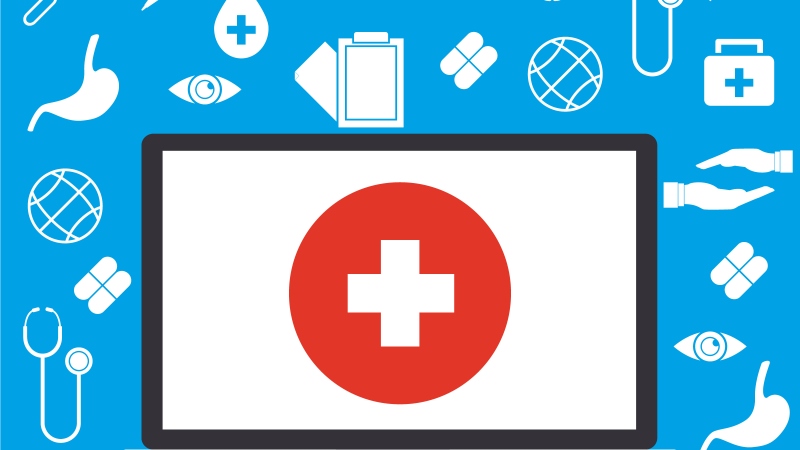
Telehealth is not just a novel idea or futuristic concept. It’s rapidly becoming what consumers want and what providers need. But is telehealth everything people hope it will be?
That question still remains to be answered, says Harry Greenspun, director of the Deloitte Center for Health Solutions, a think tank at the confluence of health IT, value-based care, consumer transformation, and health policy. Greenspun says telehealth—the delivery of health care services while the patient is at one site, and the licensed health provider is at another site— cuts across all those issues.
“We know [telehealth is] more convenient, and deep down in our heart of hearts we believe this will be a great way of delivering primary care and urgent care, but you have to ask, can it be used effectively to treat a lot of different things?” he asks. “The model of how that will work isn’t clear yet.”
Telehealth has been around for 100 years. Originally people thought the phone was the answer to telehealth. Now, after decades and decades of time—telehealth is on the brink of surging, Greenspun says.
Reimbursement Woes
One of the reasons telehealth hasn’t taken hold sooner is that physicians haven’t been paid to use it. In addition, historically, it has taken precious time away caregivers. “The only places where you’ve seen it used extensively is in places that have had incentives—like the Veterans Administration,” he said.
Now, things are changing and a couple of factors are playing heavily on the rise in telehealth use, Greenspun says. The first is the slow but steady adoption of value-based care. “With value-based care [reimbursement models], you have to keep people in your system to prevent the leakage of patients. So keeping them is a strong driver,” he says. Telehealth offers the convenience patients want.
The Medicare Access and CHIP Reauthorization Act of 2015 (MACRA)—the bill overhauling health care reimbursement away from volume and toward value—is driving telehealth forward, but the usage of telehealth has still been sporadic, according to Deloitte’s research. “And even where it’s catching on, you don’t see enormous amounts of patients using it–maybe 5 percent,” Greenspun says. “Everyone has got a toe in the water, but there are no burning platforms yet.”
Despite all that, Greenspun says that telehealth is in the stage of “amping up.”
Patient Engagement
Under MACRA, patient engagement will be one of the significant factors used to determine reimbursement. Private companies are looking to telehealth to achieve the “triple aim”–care, health, and cost.

Ralph Derrickson is president of Carena, a telehealth company that has worked with Microsoft and Boeing’s health plans to bring down health care costs with televideo house calls.
He said virtual house calls go a long way in increasing the patient satisfaction quotient of health care. “It does a tremendous amount to lower anxiety,” Derrickson says.
With televideo house calls, patients can be seen 24/7. A visit takes roughly eight minutes of wait time and 17-22 minutes to be seen by the provider, with the entire process taking about 45 minutes—for around $50. This is a dramatic savings over a visit to the ER for typically $700 and hours of wait time.
Telehealth visits also save money by increasing care to chronic-condition patients, and encouraging and supporting them to manage their own care. When it comes to getting Americans to be compliant to their treatment plans, perhaps America is going about it all wrong, Derrickson says. Instead of asking whether the patient is doing what the doctor asked, the question should be: Are doctors doing what’s meaningful for the patient?
This kind of perspective is totally in line with MACRA, Derrickson says. With value-based care reimbursement kicking in as soon as next year, “telehealth will have a big role to play in the future.”
Consumerism Plays a Key Role
The second thing driving the market is the growth of consumerism in health care, Greenspun says. Health care consumers are demanding the same kinds of services that they are getting in other industries. With the changes enacted by the Affordable Care Act, many more Americans are finding themselves in high-deductible health plans. “They are investing a lot of their own money,” he says. Because of this, “their expectations are rising very, very rapidly.”
Deloitte’s research has also revealed that consumer interest in telehealth is very high. With providers still slow to use it, this leaves a perfect gap of opportunity. “The driver is coming,” he adds. Consumers expect all sorts of tools and technology to help manage their chronic diseases, including mobile services and changes that will lower health care costs.
One downside in telehealth’s growing popularity is that it might promote over-utilization of health care. If there’s a barrier to seeing a doctor—leaving the house—and you remove it, there could be a lot of unnecessary visits to the doctor. “We need to sort out what the right role is for telehealth and under what settings it will work best,” Greenspun says.
Legislation Still Lacking

There are a lot of legislative barriers to using telehealth, according to Greenspun, and one of the underlying arguments against passing Federal legislation is the argument that local physicians need to be protected. They could lose patients and take cuts to their bottom line when a nationwide telehealth market opens up.
Plus, there are a variety of telehealth licensing laws that make it difficult for regional telehealth to be used. “We have all sorts of bizarre licensing issues across the country,” Greenspun says.
In addition, staffing certification varies. Nurse practitioners often fill the need in urgent care settings and oversight of these nurse practitioners is regulated differently in different states, he adds. “All those factors come into play when regulators try to tackle telehealth. It all has to be sorted through,” Greenspun says.
Why the resistance?
Ultimately, the health care sector just doesn’t feel secure yet that telehealth can deliver high-quality care for a variety of conditions. Also, it’s a threat to the current business model, Greenspun says. “Resistance will be high. There is a lot of caution in health care. Old-school healthcare is usually evidence-driven,” he adds.
VA’s Example
Long before telehealth became a widespread notion, the Veterans Health Administration (VHA) began using it. Telehealth is part of VA’s vision to create a more connected patient and provide more patient satisfaction into the future. In FY 2015, more than 12 percent of veterans received elements of their care via telehealth, the VA reports. VA telehealth grew 5 percent in FY15 and is expected to grow 6 percent in FY16.
Telehealth works especially well for the VA because according to the agency, 45 percent of veterans live in rural areas without access to care. The Defense Health Agency is taking it one step further by working on a way to provide telehealth care to Veterans overseas, MeriTalk reported June 29.
According to the VA, telehealth made dramatic inroads in savings in 2015 through reduced hospitalization. Veterans enrolled in Home Telehealth for non-institutional care needs and chronic care management had a 58 percent decrease in VA bed days of care and a 35 percent decrease in hospital admissions. VA patient satisfaction with telehealth was given high marks in more than 90 percent of patients.
Neil Evans, chief officer in the Office of Connected Care at the VHA, said the VA’s use of telehealth to increase Veterans’ access to health care services started in earnest more than a decade ago.
“What started as a small pilot is now a fundamental capability of our health care system,” he says “Telehealth is transforming the veterans’ experience of care, making fundamental health care services and specialty care services available to veterans in a convenient manner, in locations where such services in the past would have been hard for VA or even the health care system at large to provide.”
Currently, the VA’s home telehealth program has been helping more than 100,000 veterans a year with complicated health conditions safely stay in their homes with reduced risk of hospitalization and health complications, according to Evans. “Our clinical video telehealth program, which supports real-time video visits, has allowed mental health and other clinical services to be delivered at home,” he says.
Additionally, the VHA has added “Annie,” a two-way text messaging system named after Annie Fox, the first woman to be awarded the Purple Heart, for her valorous service during the attack on Pearl Harbor. Using simple text messages, Annie helps support veterans as they monitor their health, reinforcing and reminding them of the care plan they’ve worked out with their provider, Evans says.
Another development at the VA is Video Connect, a mobile app and Web application, which will allow veterans to more conveniently conduct video visits with their VA provider on their own personal mobile device or computer, according to Evans.
The VA is also leveraging its existing telehealth network to launch a regional/national Mental Health Telemedicine Clinical Resource Centers, he says. These centers will provide veterans, particularly those living in rural areas, with rapid access to mental health services where local barriers exist. “This expanded effort will help close the gap in access to mental health care, especially in traditionally underserved communities,” Evans said.
Mental Health Telehealth Clinical Resource Centers will be located in Charleston, S.C.; Salt Lake City; Pittsburgh; and a consortium of facilities in the Pacific Northwest, according to Evans. The fifth facility, already operational in West Haven, Conn., is a specialty hub focused on the most severe and complex mental health issues, such as chronic depression and bipolar disorder.
Editor’s Note: This story was updated to provide a breakdown of the televideo time allotment.
